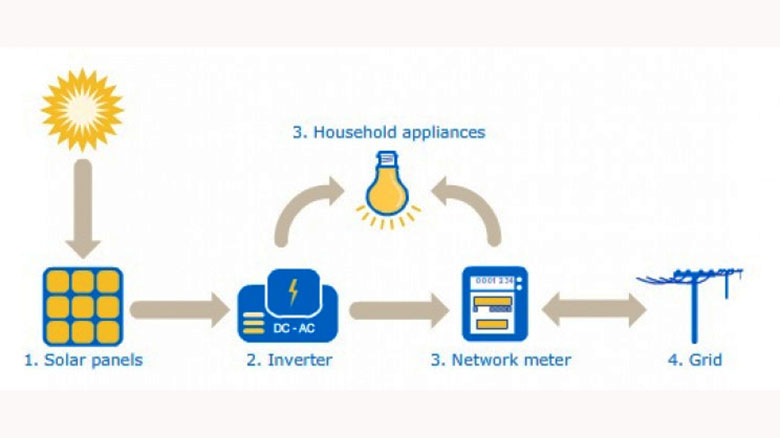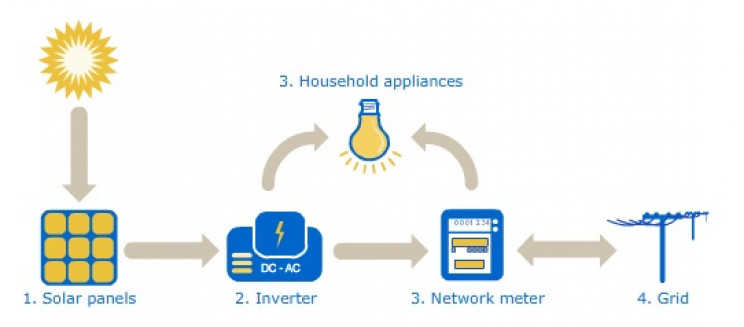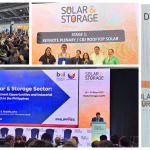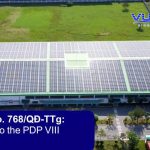
Whether you love them or hate them, PV panels are a marvel of engineering. But how do they work? Solar photovoltaic panels have become commonplace today. Many roofs around the world are now clad in them. But how do they actually work? Let’s find out.
How solar pv panels work step by step?
In a nutshell, solar PV panels convert light from the sun into electricity. To do this several steps are required, as you can imagine. The first step in the whole cycle is the generation of light. Our Sun, a G2V (second hottest yellow G-class, main sequence) and third-generation star, is a giant nuclear fusion reactor.
As it combines atoms together under immense pressure and temperature at its core, one by-product of this process, apart from enormous amounts of heat (around 15 million degrees Celsius), is a copious amount of light.
This light travels from the site of atomic fusion to the Sun’s surface, sometimes taking hundreds of thousands of years to do so.
Once it reaches the Sun’s surface, light is dispersed into space around it. Light, as we all know, is made up of tiny packets, or quanta, called photons.
These photons travel the emptiness of space in all directions, with a very small amount of it reaching the Earth. To travel the 93 million miles between us and the Sun takes, at the speed of light, around 8.5 minutes.
- The cooperation agreement between Vu Phong Energy Group and Hue University
- Marrying two types of solar cells draws more power from the sun
Every single hour countless numbers of photons irradiate our Earth offering enormous amounts of energy for life. It has been estimated that if mankind could make use of the vast majority of this, it should be enough to satisfy global energy needs for an entire year. But to do that, we need some form of technology to do so. One of our main solutions was the development of the photovoltaic cell.
This technology uses semiconductors, usually silicon, to trap and convert these photons into an electrical current. Semiconductors are materials, that act as both electrical conductors and insulators under given conditions. When the photons from the sun, some hundreds of thousands of years old, hit the solar cell, they knock electrons loose from the semiconductor’s atoms.
To be of use to us, these electrons need to be harvested or herded somewhere to generate an electrical current. In order to achieve this, an electrical imbalance is needed within the PV cell.
You can liken this to a slope down which the electrons can flow in the same direction. PV panels are usually composed of two layers of semiconductor
To achieve this, PC panels are composed of several semiconductor layers sandwiched together. Each semiconductor layer is “doped” with some other material to make them either positively or negatively charged.
To be of use to us, these electrons need to be harvested or herded somewhere to generate an electrical current. In order to achieve this, an electrical imbalance is needed within the PV cell.
You can liken this to a slope down which the electrons can flow in the same direction. PV panels are usually composed of two layers of semiconductor
To achieve this, PC panels are composed of several semiconductor layers sandwiched together. Each semiconductor layer is “doped” with some other material to make them either positively or negatively charged.

Phosphorous is usually the “doping” agent of choice for the top layer to give it a negative charge, aka n-type silicon. Boron is usually used for the lower of the positively charged layer, aka p-type silicon.
This setup primes the cell for the creation of an electrical circuit once electrons are released. But some other components are needed to collect and turn these electrons into usable power.
“Metal conductive plates on the sides of the cell collect the electrons and transfer them to wires. At that point, the electrons can flow like any other source of electricity.” – livescience.com.
As more and more of them flow through the circuit, direct current electricity is generated that can be used for useful work. But first, the DC current needs to be converted to alternating current (AC) for use in most electrical devices in your home.
Once in AC form, the electrical current can be used to power the myriad of electrical devices in your home. Or, alternatively, it can be sent to the national grid – – usually attracting some form of remuneration.
Each solar panel is made of several such PV cells and PV installations usually consist of multiple panels to form a PV array.
To do this, the DC current is passed into a device called a solar inverter. These not only generated AC current but also provide a ground fault protection for the panel array.
The more PV panels, the larger the array, and the more potential electrical generation possible.
Do solar panels run out of electrons?
Put simply no, it’s not possible. This is because PV panels work by freeing up electrons from the “doped” semiconductor materials within the cell that form a circuit and then return to the semiconductors within the panel.
The same is true for any electrical circuit. Here electrons flow as an electrical current through a closed loop.
“Circuits don’t create, destroy, use up, or lose electrons. They just carry the electrons around in circles.” – wtamu.edu.
The entire device, when exposed to sunlight, generates an electrical circuit that flows in one direction through the PV device, and it’s ancillary components.
“The electrons at the front of the cell are collected by super-thin grid lines that are printed onto the cell front surface. They flow into thicker busbars (metallic strips or bars used for electric power distribution), like individual cars on residential streets all jamming into a freeway—except they’re all traveling at near the speed of light!
The electric current then flows into a circuit where it gives up its voltage potential as electrical energy. The exhausted electrons then keep on flowing in the electrical circuit until the flow back into the backside of the solar cell, where they recombine with the holes they originally left behind.” – interplaylearning.com.
For this reason, the cells never “run out” of electrons. They are always flowing around and around the created circuit within the PV cell.
A voltage potential is created by photons from the sun which give up some of their energy in the load of the circuit. This then flows back into the solar cell again and the process is repeated over and over again – – as long as there is sunlight of course.
How do portable solar panels work?
Portable solar panels, as the name suggests, are PV panels that can be transported around and used in a mobile capacity. They differ from more traditional PV panels, which are heavy and cumbersome by comparison and tend to be used in a static, or fixed, setup.
Their basic function is basically the same as larger commercial and domestic arrays. Portable PV arrays tend to be more compact and are a lot smaller in size.
They may also come with additional features like foldable design, or kickstand and their overall aesthetic appearance will vary widely.
They tend to have less power generation capacity than larger PV arrays and are specifically tailored for use on campsites or RV trips. Typical residential PV arrays can generate around 30 kWh of electricity per day.
Portable ones, on the other hand, are usually only capable of generating between 5 and 10% of that amount. But since you should have fewer electrical devices on you, unless you like lugging around your 40-inch TV and Playstation 4 with you, this should be more than sufficient.
Read more:




